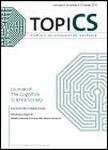版权所有:内蒙古大学图书馆 技术提供:维普资讯• 智图
内蒙古自治区呼和浩特市赛罕区大学西街235号 邮编: 010021

作者机构:Hong Kong Univ Sci & Technol Div Social Sci Hong Kong Peoples R China Hong Kong Univ Sci & Technol Div Social Sci Kowloon Clear Water Bay Hong Kong Peoples R China
出 版 物:《TOPICS IN COGNITIVE SCIENCE》 (Top. Cognitive Sci.)
年 卷 期:2024年第16卷第3期
页 面:349-376页
核心收录:
学科分类:0402[教育学-心理学(可授教育学、理学学位)] 04[教育学]
基 金:Huawei Technologies RGC Hong Kong
主 题:Computational modeling Deep neural network Hidden Markov model Eye movement Explainable artificial intelligence Visual cognition Psycholinguistics Human learning Machine learning
摘 要:One important goal of cognitive science is to understand the mind in terms of its representational and computational capacities, where computational modeling plays an essential role in providing theoretical explanations and predictions of human behavior and mental phenomena. In my research, I have been using computational modeling, together with behavioral experiments and cognitive neuroscience methods, to investigate the information processing mechanisms underlying learning and visual cognition in terms of perceptual representation and attention strategy. In perceptual representation, I have used neural network models to understand how the split architecture in the human visual system influences visual cognition, and to examine perceptual representation development as the results of expertise. In attention strategy, I have developed the Eye Movement analysis with Hidden Markov Models method for quantifying eye movement pattern and consistency using both spatial and temporal information, which has led to novel findings across disciplines not discoverable using traditional methods. By integrating it with deep neural networks (DNN), I have developed DNN+HMM to account for eye movement strategy learning in human visual cognition. The understanding of the human mind through computational modeling also facilitates research on artificial intelligence s (AI) comparability with human cognition, which can in turn help explainable AI systems infer humans belief on AI s operations and provide human-centered explanations to enhance human-AI interaction and mutual understanding. Together, these demonstrate the essential role of computational modeling methods in providing theoretical accounts of the human mind as well as its interaction with its environment and AI systems. In this paper, I summarize my research in visual cognition, language processing, and explainable AI to demonstrate the essential role of computational modeling methods in providing theoretical accounts of the